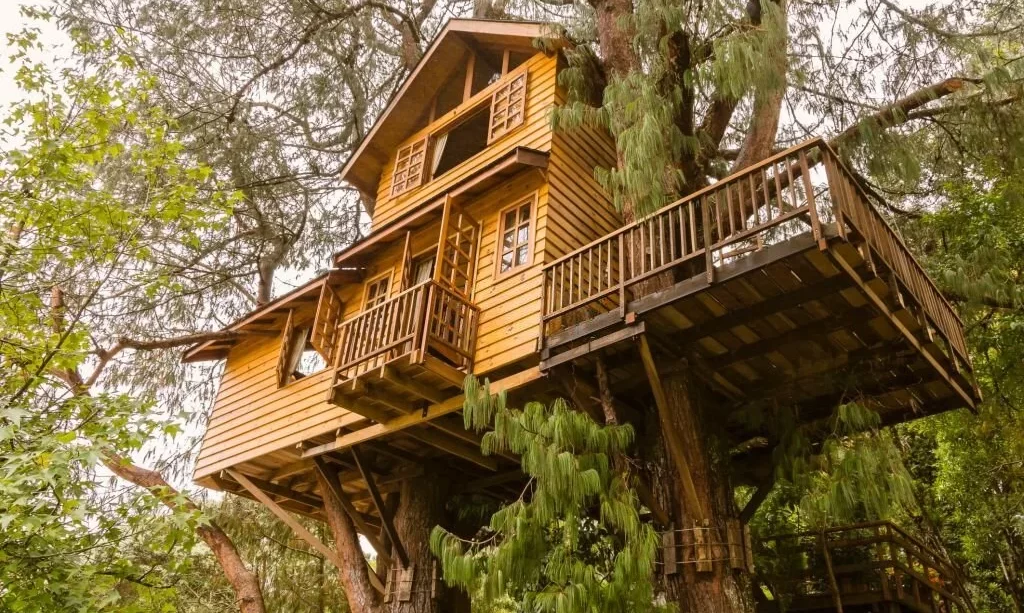When we envision the construction of a house, the image of sturdy timber framing often comes to mind. Timber, with its natural strength and versatility, has been a fundamental building material for centuries. It’s not just the support structure; it forms the backbone of our homes. But have you ever wondered just how many trees it takes to build a house? In this exploration, we’ll unveil the timber equation, shedding light on the indispensable role of timber in house construction. We’ll delve into the intricacies of estimating timber requirements, considering different types of houses, sizes, and architectural styles. Our quest is to understand the relationship between trees and the places we call home.
The Role of Timber in House Construction
The role of timber in house construction is nothing short of foundational. Timber, typically in the form of lumber, serves as the primary material for framing and structural elements. It supports the weight of walls, floors, and roofs, providing the stability and durability that houses require. Beyond structural purposes, timber is used for a myriad of components, including doors, windows, cabinetry, and finishing details. This natural resource is not only abundant but also valued for its aesthetic appeal. However, its extensive use raises questions about sustainability and environmental impact. As we proceed, we will explore the critical role timber plays in building houses and the intricate balance between construction and conservation.
Estimating Timber Requirements for Different Types of Houses
The number of trees needed to build a house can vary significantly depending on the type of house being constructed. Small, medium, and large houses each have distinct timber requirements. Smaller houses naturally use fewer trees, while larger homes, with their added square footage, demand more timber for support and structural elements. The number of stories and architectural styles, whether a single-story ranch or a multi-story Victorian, can also influence the amount of timber needed. By examining these factors, we can gain a clearer understanding of the range of timber requirements for different types of houses, shedding light on the complexity of the timber equation in the world of construction.
Timber Sources and Sustainability
Understanding the timber equation isn’t just about the quantity of trees required; it’s also about where and how that timber is sourced. Timber comes from forests, and the manner in which it is harvested can have a significant environmental impact. Sustainable forestry practices play a crucial role in mitigating this impact. Responsible timber sources focus on practices that ensure the long-term health of forests, which, in turn, helps to maintain biodiversity and reduce carbon emissions. Certified sustainable timber, marked with labels like FSC (Forest Stewardship Council), indicates that the wood comes from well-managed forests. By choosing sustainably sourced timber, the construction industry can minimize its environmental footprint and contribute to the preservation of vital ecosystems.
Reducing Timber Consumption in Construction
In a world where environmental concerns are paramount, it’s essential for the construction industry to find ways to reduce timber consumption. Innovative construction methods and materials offer solutions to this challenge. Engineered wood products, for example, maximize the use of wood resources by using smaller trees and wood scraps efficiently. Additionally, recycled wood products can give new life to previously used timber. Embracing these alternatives can help reduce the number of trees required for construction while maintaining structural integrity. Responsible construction practices, such as designing for efficiency and employing modular construction techniques, also play a significant role in minimizing timber consumption and waste.
Conclusion
The timber equation in house construction is a complex one, influenced by factors such as house size, design, and sustainable sourcing. Timber is undeniably the backbone of our homes, but as stewards of the environment, it’s crucial to balance our need for this resource with responsible practices. By using sustainably sourced timber and embracing innovative construction methods, we can reduce the number of trees required to build a house. This not only benefits the environment but also ensures a more sustainable future for the construction industry. As we continue to build the places we call home, let us do so with a mindful eye on the preservation of our planet and the responsible use of timber resources.



